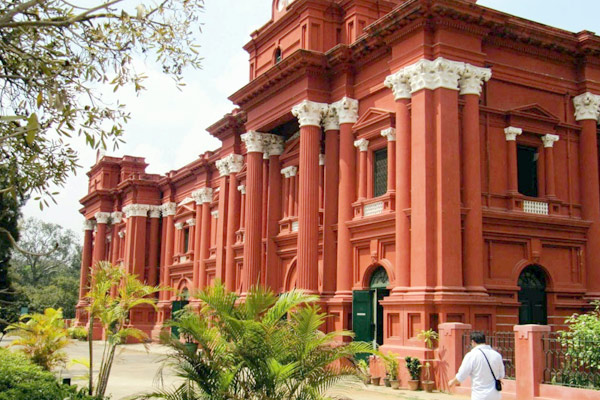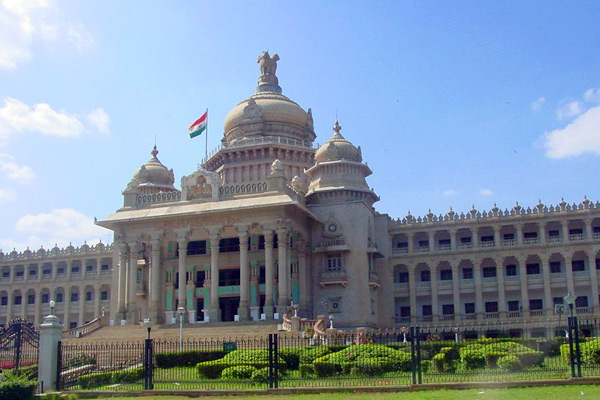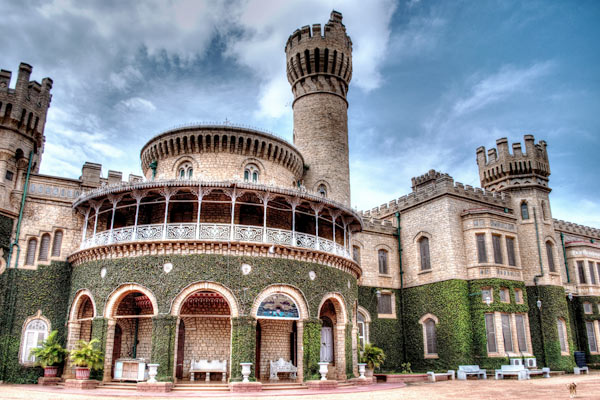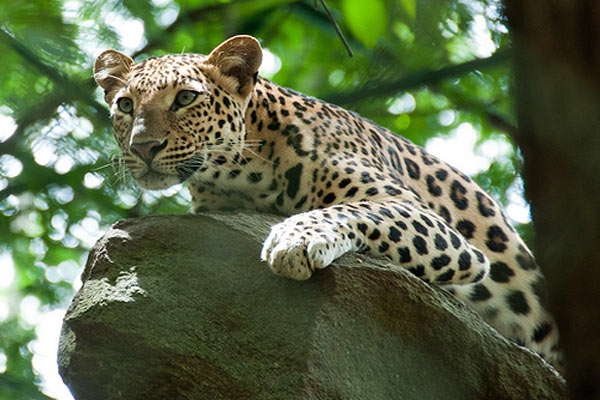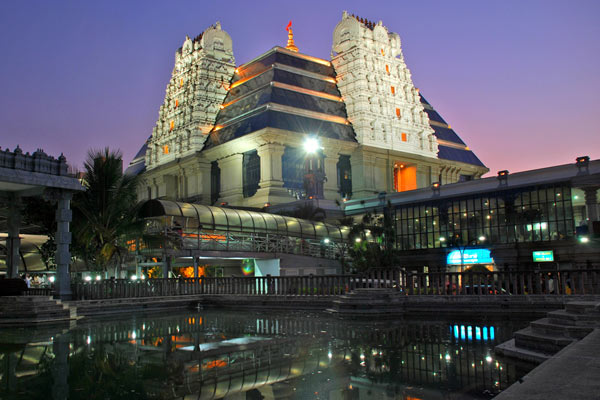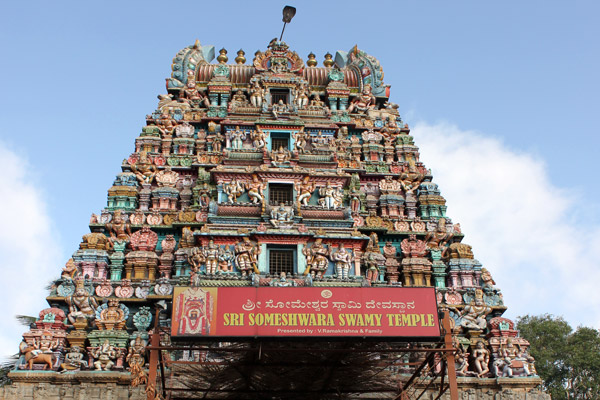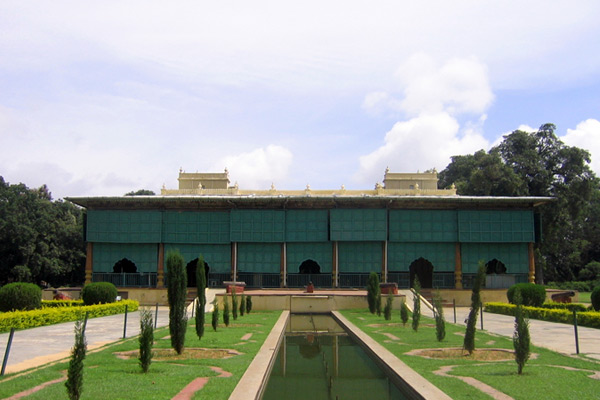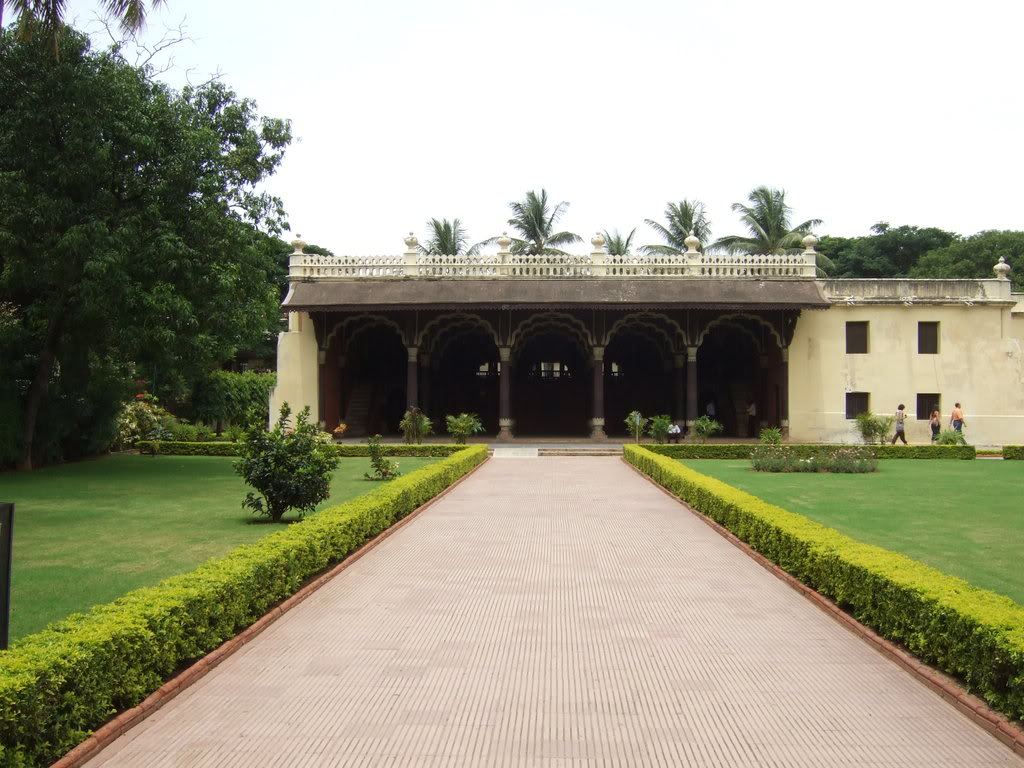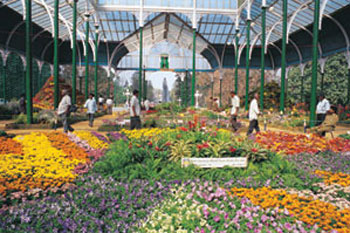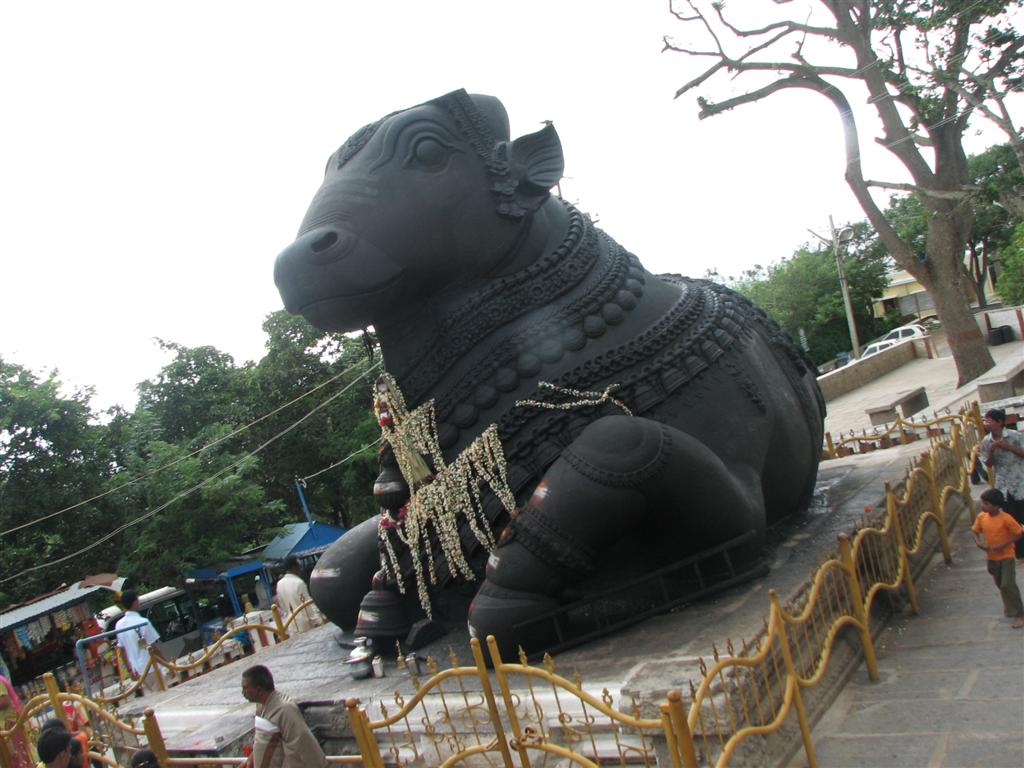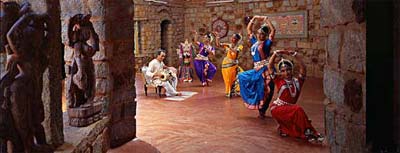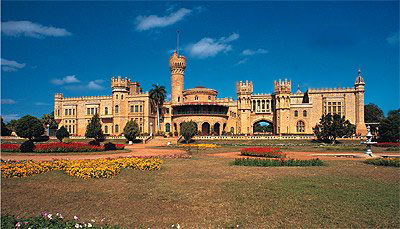Bengaluru, The Garden City of India
General Information
District:BangaloreState:KarnatakaCountry:IndiaArea:365.6 Sq. Km.Language Spoken:Kannada, English, Hindi, Telugu and TamilLong Distance Code:+91-80Importance:Capital of Karnataka and known as the Silicon valley of IndiaBest Time To Visit:October to MayDescription:
Once famous as the baston of Tiger of the south, Tipu Sultan, Bangalore today is known as the Silicon valley of India. This town experiencing a pleasant climate throughout the year offers a beautiful contrast of nature and man made architecture. The city of Gardens as it is known as, Bangalore is dotted with innumerable parks and is always in bloom; true to its name, which, the scholars believe has been derived from the innumerous trees of Benga. The name founds a mention as Bengaluru in the 9th century inscription.
Though the town is ancient town, it developed only after it was gifted to Kempe Gowda, a chieftain in the Vijayanagara Empire. He used the revenue from the land to devlop the town encouraging foreign merchants, artisans and people to settle down here. Later it was further developed by Hyder Ali and his son Tipu Sultan who fought vailantly against the British in vain. Thus the city today has become the hub of old with new. It has ancient temples like the bull temple, magnificent forts, beautiful gardens like the Lal Bagh, one of the oldest museums of India and the most modern structures suitable to hold the IT hub of India.Location:
Located in the southern part of the state of Karnataka, the state capital Bangalore, is about 950 meters above sea level. The district of Bangalore shares its borders with the state of Tamilnadu in the south, Kolar district in the east, Tumkur district in the North west, Mandhya district in the west and district of Chamrajnagar in the south west.Climate:
Bangalore enjoys a pleasant climate throughout the year.
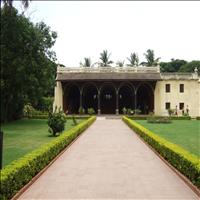 The fort, today in ruins, is famous as Tipu Sultan's summer palace, which was actually a mud fort, built by Kempe Gowda in the early 16th century. As the princely state of Mysore changed hands with various rulers, it was passed to Hyder Ali and his son Tipu Sultan. Unfortunately the fort was destroyed during the constant battles fought between the brave Tipu Sultan and the British. Tipu Sultan, died fighting a vain battle defending this very fort, which was also burnt down. Although it was expanded and rebuilt manytimes, other than the ancient Ganesh temple, built by Kempe Gowda, nothing remains.
The fort, today in ruins, is famous as Tipu Sultan's summer palace, which was actually a mud fort, built by Kempe Gowda in the early 16th century. As the princely state of Mysore changed hands with various rulers, it was passed to Hyder Ali and his son Tipu Sultan. Unfortunately the fort was destroyed during the constant battles fought between the brave Tipu Sultan and the British. Tipu Sultan, died fighting a vain battle defending this very fort, which was also burnt down. Although it was expanded and rebuilt manytimes, other than the ancient Ganesh temple, built by Kempe Gowda, nothing remains.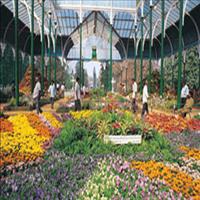 Bangalore is known as the city of Gardens for the beautiful gardes which are not only beautiful but are centuries old. Lal Bagh is one of the most famous gardens of Bangalore. Hyder Ali laid out this famous botanical garden and his son added horticultural wealth to it by importing trees and plants from several countries. The garden today houses over 1000 species of flora, which include rare and enchanting collection of tropical plants, trees and herbs. The Glass House, modelled along London's Crystal Palace, is the center of attraction in this 2400-acre park. Bi-annual flower shows attracting participants from all over India is held in the Glass House.
Bangalore is known as the city of Gardens for the beautiful gardes which are not only beautiful but are centuries old. Lal Bagh is one of the most famous gardens of Bangalore. Hyder Ali laid out this famous botanical garden and his son added horticultural wealth to it by importing trees and plants from several countries. The garden today houses over 1000 species of flora, which include rare and enchanting collection of tropical plants, trees and herbs. The Glass House, modelled along London's Crystal Palace, is the center of attraction in this 2400-acre park. Bi-annual flower shows attracting participants from all over India is held in the Glass House. Another famous one is the Cubbon Park. This spectacular park was laid out in the heart of the cantonment in 1864 and fountains and bandstand have been added to it since then. and a wealth of atatury have been added. Lush green lawns, shady flowering trees, vibrant flower beds, make Cubbon park an ideal place for morning joggers and alike.
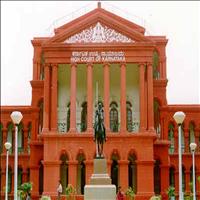 One of the important buildings, the Government Museum is one of the oldest in India (1886). Special attractions here are the antiquities from Mohenjodaro period. Situated nearby the museum is Visveswaraya Industrial and Technological Museum named after the great engineer-statesman.
One of the important buildings, the Government Museum is one of the oldest in India (1886). Special attractions here are the antiquities from Mohenjodaro period. Situated nearby the museum is Visveswaraya Industrial and Technological Museum named after the great engineer-statesman. Next to the VITM is the Visveswaraya Industrial Trade Center, the first of its kind in India. In addition to its trade promotional activities, the Center has two exhibition floors housing a permanent display of all that is manufactured in Karnataka.
Near the Museum is the K.Venkatappa Art Gallery that has a permanent exhibition of the works of the great artist, K. Venkatappa. The Gallery does much to encourage art in the state.
Also in the Cubbon Park are the Seshadri Iyer Memorial Hall, which houses the public library, the High Court and the Jawahar Bal Bhavan. The Bhavan, with its toy train, fairgrounds and theatre, is a recreational, hobby and educational centre for children.
 There is much more to gardens in Bangalore. Especially for the spiritual bent of mind, there are various monuments to be visited for the religious. Other than the huge Bull temple, there is the Gangadhareshwar Temple is a unique temple dedicated to the Lord Shiva which has a rare idol of God of fire, Agni. This is an ancient temple built by Kempe Gowda and experiences a unique feature annually. Only on the Makar Sankranti day, which falls in mid January, the rays of the setting Sun reach directly through the horns of Nandi on the Shiva Lingam.
There is much more to gardens in Bangalore. Especially for the spiritual bent of mind, there are various monuments to be visited for the religious. Other than the huge Bull temple, there is the Gangadhareshwar Temple is a unique temple dedicated to the Lord Shiva which has a rare idol of God of fire, Agni. This is an ancient temple built by Kempe Gowda and experiences a unique feature annually. Only on the Makar Sankranti day, which falls in mid January, the rays of the setting Sun reach directly through the horns of Nandi on the Shiva Lingam. The Jumma Masjid is probably the oldest mosque in the city with an imposing structure of tall ornamented granite pillars adorning the elevated prayer hall. The St. Mary's Church is the only Church in the state of Karnataka which has been elevated to the status of Minor basilica. Built in the early 19th century, this is also one of the ancient churches of the state
 Bull; known as Nandi, is the mount of Lord Shiva. Every temple dedicated to Lord Shiva has the Nandi on the doorsteps. But this temple, though dedicate to Lord Shiva is famous as the bull temple, because of the huge monolithic bull sitting at the doorsteps of the comparatively small temple. The temple is situated at Basavanagudi surrounded by groundnut fields around. According to a legend, once a farmer hit a bull which was trying to eat the ground nuts. The bull turned into a stone and started growing, as it started becoming huge, the farmers requested Lord Shiva, who in turn asked to place a trident on the forehead of the Bull. This made the bull stop growing. Since then the first crop of ground nut is offered to the deity in gratitude.
Bull; known as Nandi, is the mount of Lord Shiva. Every temple dedicated to Lord Shiva has the Nandi on the doorsteps. But this temple, though dedicate to Lord Shiva is famous as the bull temple, because of the huge monolithic bull sitting at the doorsteps of the comparatively small temple. The temple is situated at Basavanagudi surrounded by groundnut fields around. According to a legend, once a farmer hit a bull which was trying to eat the ground nuts. The bull turned into a stone and started growing, as it started becoming huge, the farmers requested Lord Shiva, who in turn asked to place a trident on the forehead of the Bull. This made the bull stop growing. Since then the first crop of ground nut is offered to the deity in gratitude. The temple besides was built by Kempe Gowda in the early 16th century which has a typical Dravidian architecture. The monolithic bull, which is 4.57 m high and 6.10 m long, is carved out of huge granite and is shiny black in colour and is perhaps the only largest monolithic Bull in the world. . People from far and wide come to visit this temple.
 One of the favourite picnic spots near Bangalore is 18 km away small place, Ramohalli. Ramohalli is famous for the Big Banyan Tree which is believed to be 400 years old and is spread over the vast area of four acres of land. The Nrityagram Dance Village was founded by Protima Gouri and has all the facilities for students who wish to learn the Indian classical forms of dance. The Bannerghatta National Park is the major attraction for its Lion Safari. The Kolar Gold Mines are 120 kms from Bangalore and are one of the deepest mining pits in the world. One can visit these 10,000 feet below the surface of the earth mines with prior permission. Raichur is a historical town with a rich cultural heritage situated on the outskirts of Bangalore at a distance of 120 kms. One can visit the imposing fort telling the tales of the bygone era, although in ruins to experience the grandeur of the past.
One of the favourite picnic spots near Bangalore is 18 km away small place, Ramohalli. Ramohalli is famous for the Big Banyan Tree which is believed to be 400 years old and is spread over the vast area of four acres of land. The Nrityagram Dance Village was founded by Protima Gouri and has all the facilities for students who wish to learn the Indian classical forms of dance. The Bannerghatta National Park is the major attraction for its Lion Safari. The Kolar Gold Mines are 120 kms from Bangalore and are one of the deepest mining pits in the world. One can visit these 10,000 feet below the surface of the earth mines with prior permission. Raichur is a historical town with a rich cultural heritage situated on the outskirts of Bangalore at a distance of 120 kms. One can visit the imposing fort telling the tales of the bygone era, although in ruins to experience the grandeur of the past.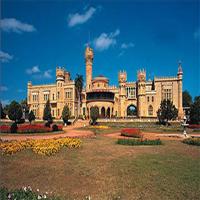 This majestic Bangalore palace, which is now a private property of the Maharaja of Mysore, the Woodeyar King, was built by their ancestors in the late 19th century. Built on the lines of the Windsor castle of Britain, wood has been extensively used in the making of the palace, complete with Gothic and foiled windows, battlements and turrets resembling the Daria Daulat Palace in Srirangapatanam. It is also famous for its carvings and paintings in the interiors of the palace. Being a private property of the royalty, it has been refrained from public visits. It can be only viewed from outside and no photography is allowed.
This majestic Bangalore palace, which is now a private property of the Maharaja of Mysore, the Woodeyar King, was built by their ancestors in the late 19th century. Built on the lines of the Windsor castle of Britain, wood has been extensively used in the making of the palace, complete with Gothic and foiled windows, battlements and turrets resembling the Daria Daulat Palace in Srirangapatanam. It is also famous for its carvings and paintings in the interiors of the palace. Being a private property of the royalty, it has been refrained from public visits. It can be only viewed from outside and no photography is allowed.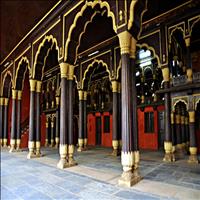 This beautiful palace which served as a summer retreat of Tipu Sultan is situated near the ‘City Market’ at the Krishna Rajendra and Albert Victor road junction. The palace was constructed to house the durbar or court, which would administer the happenings in the territory, while also serving as a summer retreat. Tipu’s Palace is the most notable among the Islamic buildings of Bangalore. Tipu called it has an ‘Abode of Happiness’ and ‘Envy of Heaven’. The construction of this Palace was commenced by Nawab Haider Ali Khan in 1781 and completed by Tipu Sultan in 1791.
This beautiful palace which served as a summer retreat of Tipu Sultan is situated near the ‘City Market’ at the Krishna Rajendra and Albert Victor road junction. The palace was constructed to house the durbar or court, which would administer the happenings in the territory, while also serving as a summer retreat. Tipu’s Palace is the most notable among the Islamic buildings of Bangalore. Tipu called it has an ‘Abode of Happiness’ and ‘Envy of Heaven’. The construction of this Palace was commenced by Nawab Haider Ali Khan in 1781 and completed by Tipu Sultan in 1791.Closed On: Friday
